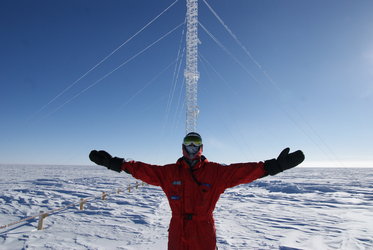Accept all cookies Accept only essential cookies See our Cookie Notice

About ESA
The European Space Agency (ESA) is Europe’s gateway to space. Its mission is to shape the development of Europe’s space capability and ensure that investment in space continues to deliver benefits to the citizens of Europe and the world.
Highlights
ESA - United space in Europe
This is ESA ESA facts Member States & Cooperating States Funding Director General Top management For Member State Delegations European vision European Space Policy ESA & EU Space Councils Responsibility & Sustainability Annual Report Calendar of meetings Corporate newsEstablishments & sites
ESA Headquarters ESA ESTEC ESA ESOC ESA ESRIN ESA EAC ESA ESAC Europe's Spaceport ESA ESEC ESA ECSAT Brussels Office Washington OfficeWorking with ESA
Business with ESA ESA Commercialisation Gateway Law at ESA Careers Cyber resilience at ESA IT at ESA Newsroom Partnerships Merchandising Licence Education Open Space Innovation Platform Integrity and Reporting Administrative Tribunal Health and SafetyMore about ESA
History ESA Historical Archives Exhibitions Publications Art & Culture ESA Merchandise Kids Diversity ESA Brand CentreLatest
Space in Member States
Find out more about space activities in our 23 Member States, and understand how ESA works together with their national agencies, institutions and organisations.
Science & Exploration
Exploring our Solar System and unlocking the secrets of the Universe
Go to topicAstronauts
Missions
Juice Euclid Webb Solar Orbiter BepiColombo Gaia ExoMars Cheops Exoplanet missions More missionsActivities
International Space Station Orion service module Gateway Concordia Caves & Pangaea BenefitsLatest
Space Safety
Protecting life and infrastructure on Earth and in orbit
Go to topicAsteroids
Asteroids and Planetary Defence Asteroid danger explained Flyeye telescope: asteroid detection Hera mission: asteroid deflection Near-Earth Object Coordination CentreSpace junk
About space debris Space debris by the numbers Space Environment Report In space refuelling, refurbishing and removingSafety from space
Clean Space ecodesign Zero Debris Technologies Space for Earth Supporting Sustainable DevelopmentLatest
Applications
Using space to benefit citizens and meet future challenges on Earth
Go to topicObserving the Earth
Observing the Earth Future EO Copernicus Meteorology Space for our climate Satellite missionsCommercialisation
ESA Commercialisation Gateway Open Space Innovation Platform Business Incubation ESA Space SolutionsLatest
Enabling & Support
Making space accessible and developing the technologies for the future
Go to topicBuilding missions
Space Engineering and Technology Test centre Laboratories Concurrent Design Facility Preparing for the future Shaping the Future Discovery and Preparation Advanced Concepts TeamSpace transportation
Space Transportation Ariane Vega Space Rider Future space transportation Boost! Europe's Spaceport Launches from Europe's Spaceport from 2012Latest

Concordia laboratory
Thank you for liking
You have already liked this page, you can only like it once!
Pristine environments, limited resources, and near-complete isolation are just some of the attractions of Antarctica, often termed the White Desert. Numerous research stations dot the outer regions of the continent where scientists gather data on glaciology, seismology, climate change and the stars.
The French-Italian Concordia research station is one of three year-round stations and is located on Dome C, a plateau some 3200 m above sea level. Secluded from the world in inhospitable conditions, the crew stationed there tackle temperatures that can drop to –80°C in the winter, with a yearly average temperature of –50°C.
The air is extremely dry, so the crew suffer from continuously chapped lips and irritated eyes. The great open landscape alternates between months of night and months of daylight, and colours, smells and sounds are almost non-existent, adding to the sense of loneliness.
In other words, Concordia is perfect.
Here, researchers study the atmosphere, free from pollution, to gain insights into how the world’s population is changing Earth’s climate. Scientists conduct glaciology research by analysing the Antarctic plateau to reveal clues to our past as chemicals are trapped and frozen in the ice.
The thin atmosphere, clear skies and zero light-pollution around Concordia make it an enviable place for observing the Universe. The very southern location of Antarctica also makes it ideal for studying Earth’s magnetic field.
Delving deeper, Concordia is looking at the inside movements of Earth. A seismograph at Concordia measures movement and the research base is part of the international network of seismograph stations.
And then there is the human factor. Despite all the hardships of life in Antarctica, up to 16 people spend around a year at a time living in Concordia in the name of science. In addition to helping conduct other experiments and station maintenance, they are an experiment themselves. And ESA sends a medical doctor to Concordia to study the crew, like this year’s resident Dr Carmen Possnig, imaged above.
The elevation, isolation and sensory deprivation can wreak havoc on crewmembers’ biological clock, making it hard to get a good night’s sleep. Researchers track the effects of this on the human body and mind which adds to data being collected on astronauts on the International Space Station.
Insights are used to help people on Earth like shift workers, bedridden patients and those suffering from sleep disorders, and of course, astronauts serving in low Earth orbit.
Antarctic research at Concordia is helping humans adapt, mentally and physically, to a changing climate, a longer voyage in space, and eventually, life on another planet.
-
CREDIT
ESA/IPEV/PNRA–Filippo Cali Quaglia -
LICENCE
ESA Standard Licence

Taking samples at Concordia

Solitary seismology

Concordia station

Concordia crew















 Germany
Germany
 Austria
Austria
 Belgium
Belgium
 Denmark
Denmark
 Spain
Spain
 Estonia
Estonia
 Finland
Finland
 France
France
 Greece
Greece
 Hungary
Hungary
 Ireland
Ireland
 Italy
Italy
 Luxembourg
Luxembourg
 Norway
Norway
 The Netherlands
The Netherlands
 Poland
Poland
 Portugal
Portugal
 Czechia
Czechia
 Romania
Romania
 United Kingdom
United Kingdom
 Slovenia
Slovenia
 Sweden
Sweden
 Switzerland
Switzerland
























